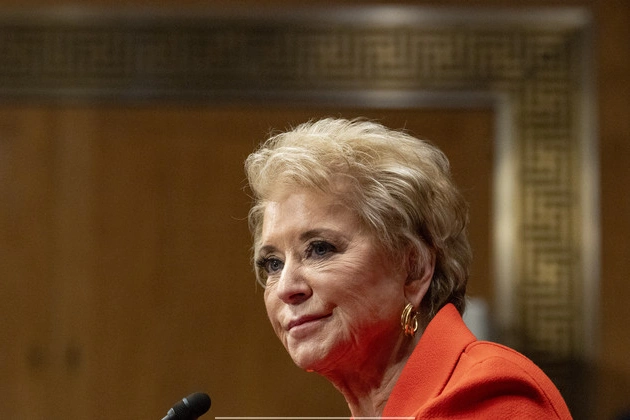
The Trump administration’s sharp reduction in workforce at the Education Department encompasses a wide range of positions, including attorneys, student aid workers, and civil rights office staff, as revealed by agency documents obtained by POLITICO.
Unprecedented Staff Terminations
The substantial staff cuts are expected to impact lawyers handling regulatory, legislative, and educational programs in the department’s general counsel’s office, policy staff, and technical workers in special education and information technology offices. Additionally, human resources departments for satellite locations will be significantly affected, along with information technology specialists.
The detailed documents outline nearly 1,000 planned staff terminations, accompanied by an organizational chart indicating the targeted offices. This initiative marks one of the earliest announcements of a reduction in force across federal agencies following President Donald Trump’s initiative to downsize government service.
Scope of Reduction
An agency official disclosed that approximately 1,300 individuals out of the department’s 4,130 employees would be impacted by the cuts, in addition to numerous others who accepted buyout and deferred resignation offers.
The workforce reductions also extend to the department’s finance and operations office, responsible for overseeing financial management, accounting, and training operations.
The office of Federal Student Aid faces notable cuts, affecting specialists reviewing financial assistance programs at educational institutions. Several regional offices, including those in New York, Boston, Dallas, and Kansas City, will witness significant reductions in technology services, vendor performance, and executive divisions.
Impact on Student Aid Programs
A student aid team focused on community outreach regarding financial literacy has been disbanded, impacting essential initiatives such as FAFSA completion workshops, student loan repayment education, and forgiveness programs for specific borrower categories.
Despite the extensive workforce restructuring, Education Department officials emphasize that the reductions target redundant tasks within the agency and affirm that critical functions, such as the Federal Student Aid office’s operations, civil rights investigations, and federal funding distribution, will remain unaffected.
Future Implications
The terminations at the department’s Institute for Education Sciences signal forthcoming changes in research analytics and statistical divisions, hinting at significant alterations in data collection methodologies influencing education policy decisions nationwide.
While the terminations represent an initial step towards the envisioned closure of the department, officials underscore that congressional approval would be necessary to execute such a drastic measure.
Transparency Concerns
Stakeholders express apprehensions regarding the lack of transparency surrounding the targeted functional areas, selection criteria for departmental dismantling, and the management of the transition process to mitigate disruptions in educational services and federal funding distribution.
Education Department leadership assures that the workforce reductions aim to streamline operations and maintain program effectiveness, safeguarding critical initiatives and services provided to students and educational institutions.
For further insights into the ongoing developments within the Education Department and the implications of the staff terminations, stay updated with reliable sources and authoritative statements from relevant organizations.















